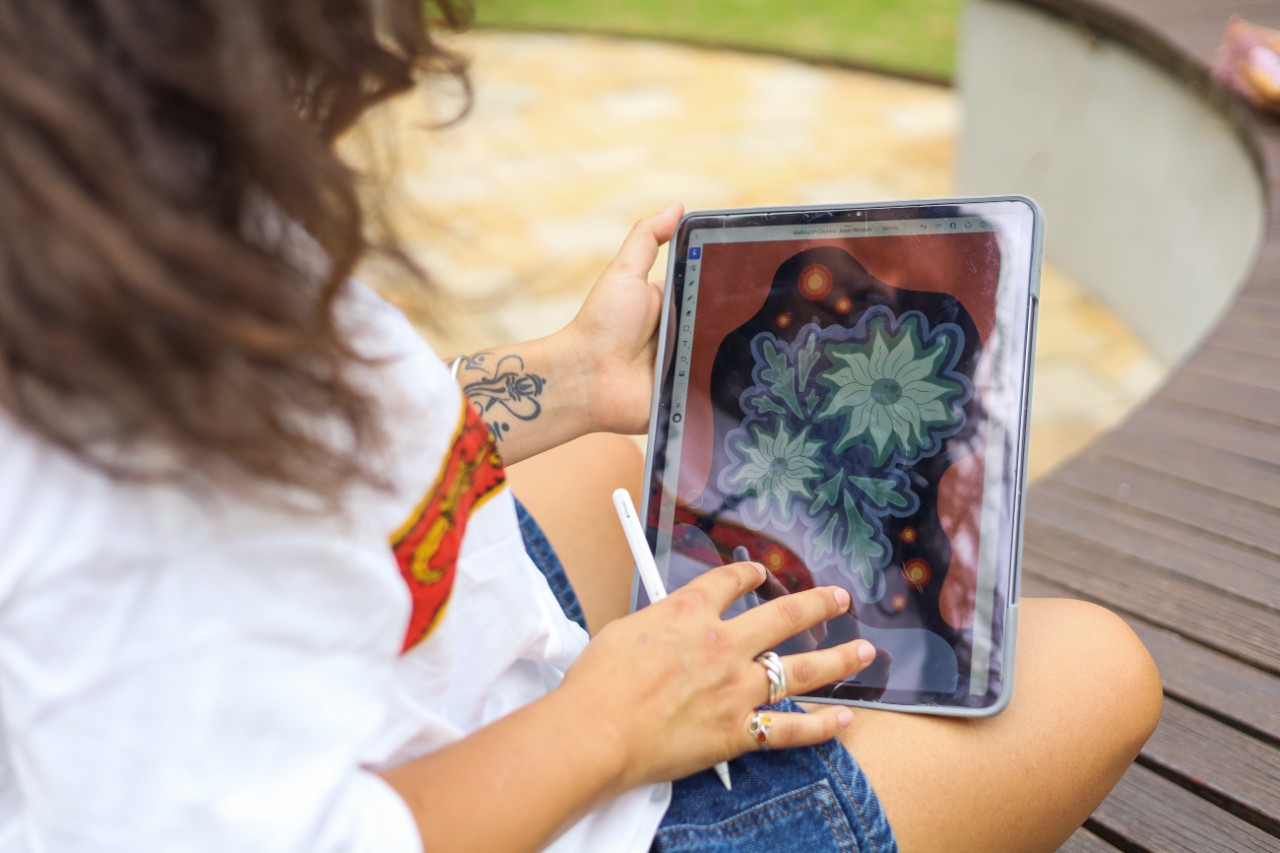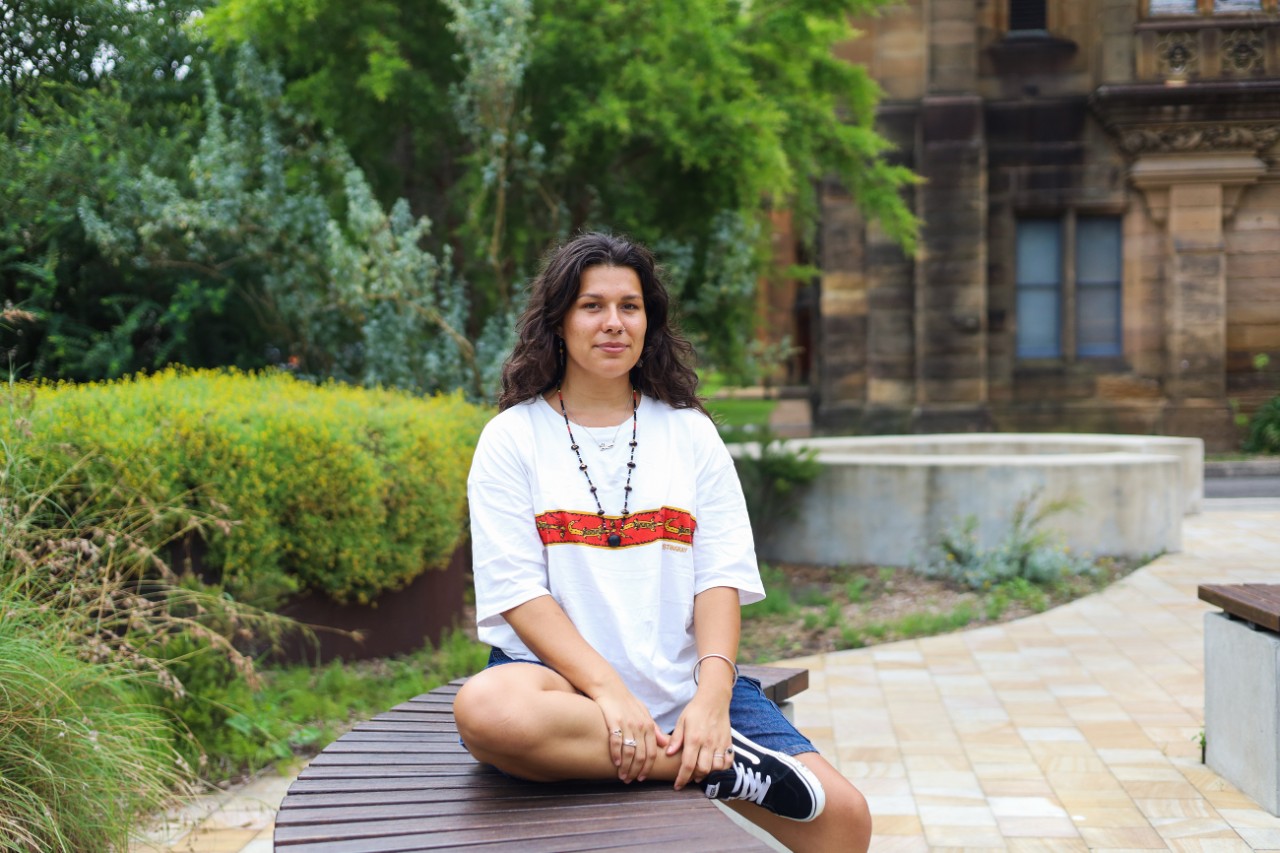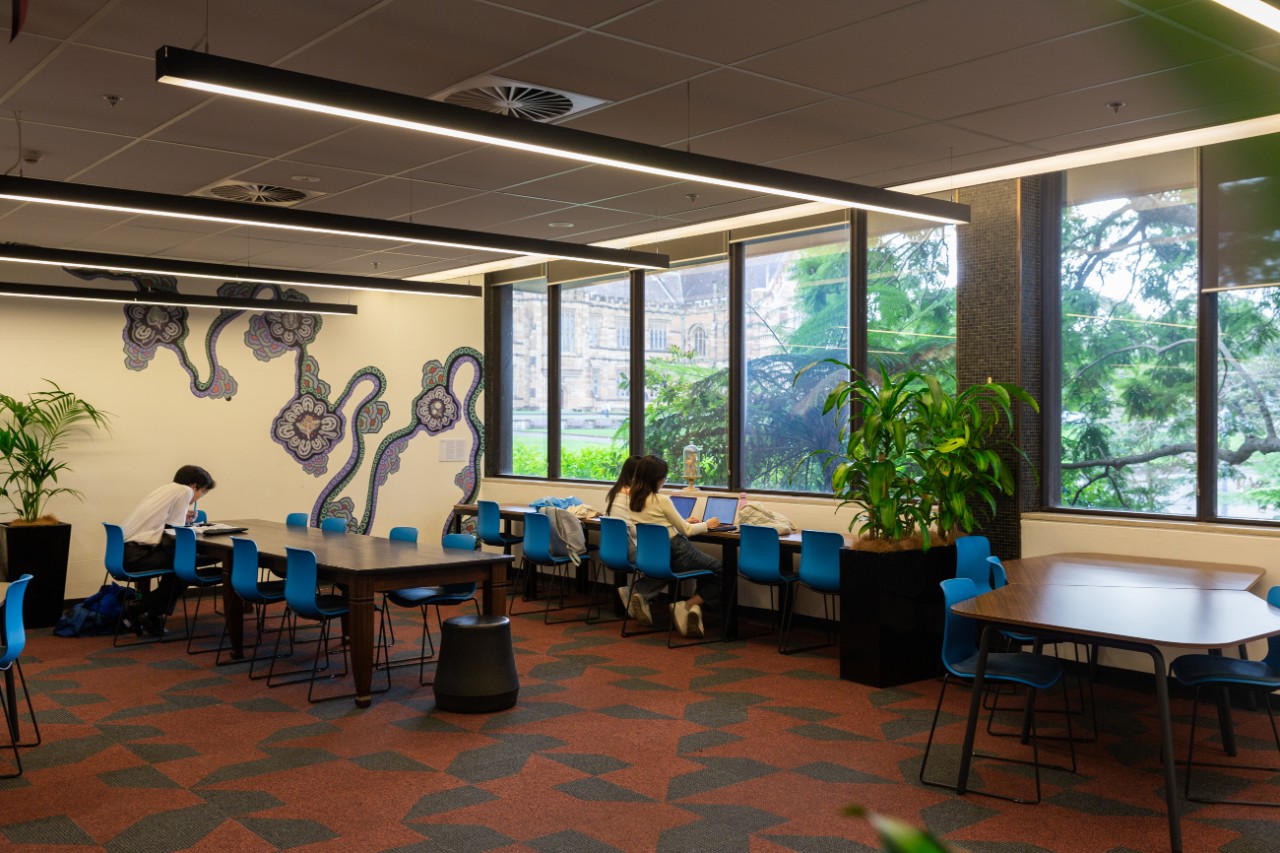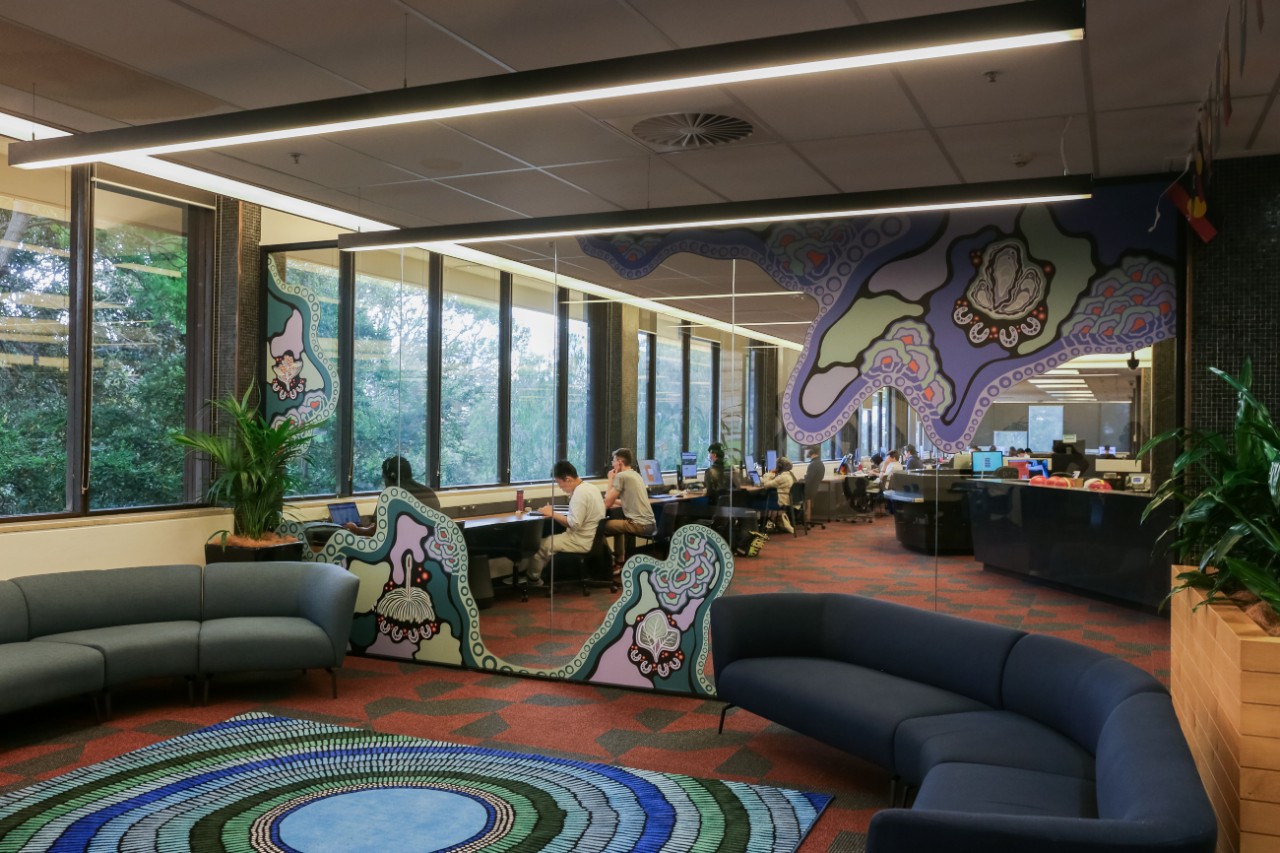Always was, always will be Aboriginal land.
The University of Sydney Library acknowledges that our buildings, collections, and practices exist on unceded Aboriginal lands. We recognise the diversity and knowledges of the Aboriginal and Torres Strait Islander staff and students across all the lands the University stands on, and respect the ongoing connection Aboriginal people have to these lands, their cultural practices, knowledge systems and histories. We pay our respects to their Elders, past and present, who have handed down custodianship to each generation for more than 60,000 years.
Money, J. (2021). Yilabara (Now). Filmed on Gadigal Country. Commissioned by the University of Sydney Library
'Walking on Country' by Jessie Waratah
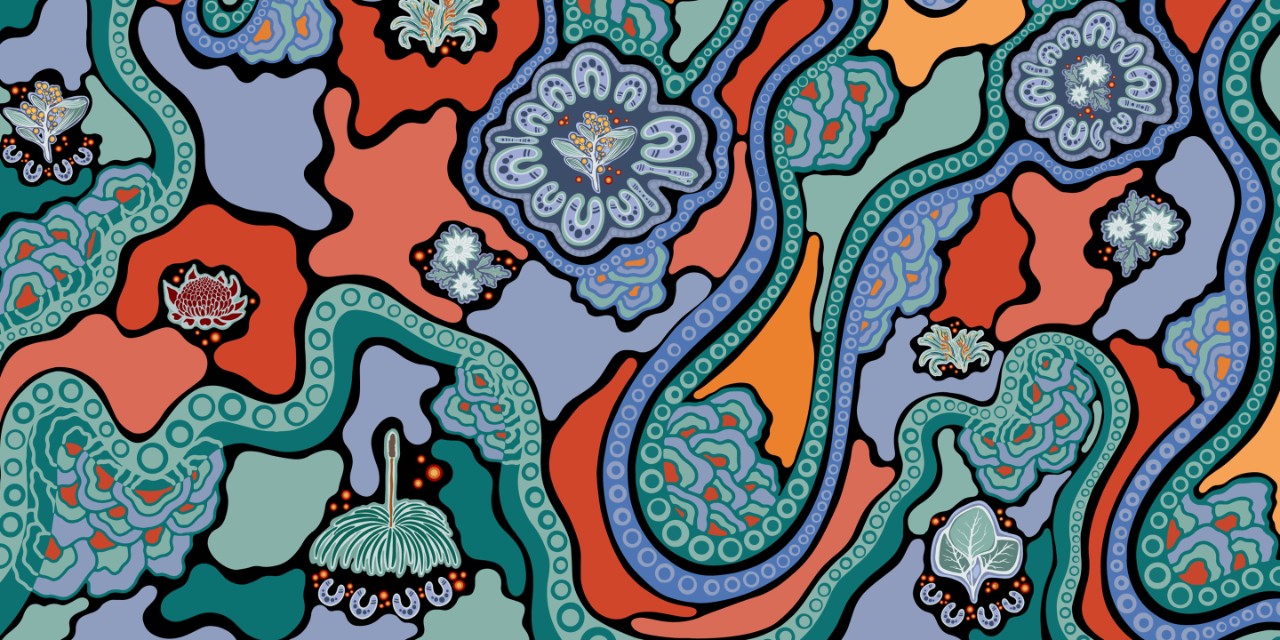

'Walking on Country' by Jessie Waratah, 2024 (detail)
Background
This placemaking artwork and design was created to connect the University of Sydney Library’s digital and physical spaces to local Gadigal Country, where many of our Library locations sit. It connects the Library’s buildings and staff and student community to Country, and invites them to remember that we are always on Aboriginal Land. It will appear in our physical spaces, in particular the Aboriginal and Torres Strait Islander Student Space in Fisher Library and also in our digital spaces, with features throughout the Library website.
This project was funded by the Office of the Deputy Vice Chancellor, Indigenous Strategy and Services as apart of the One Sydney Many People Strategy. Walking on Country by Jessie Waratah, facilitates visual storytelling to support an environment where all staff, students and community members feel safe, seen, respected and valued. This need for a sense of belonging and visual representations of culture were core themes that emerged from a project in 2023 exploring making a First Nations visible presence on the Library website and how to support cultural wellbeing on a digital platform. With creating an acknowledgement of Country and culture on our website, the Library recognised the importance of this also in our physical spaces.
We invite the Library community to come to Fisher Library and see Walking on Country on display in the Level 3 foyer, and to see a decal of the artwork in the Aboriginal and Torres Strait Islander Student Space on Level 3, Fisher Library.
Artist statement by Jessie Waratah
Growing up in Sydney as a Warlpiri and Gamilaraay woman, fortunate enough to have been born on the land of the Gadigal, nothing nourishes me more than to walk on this Country, seeking out places in this busy metropolis where I can listen to Country breathe. Through this artwork I invite you to join me in becoming present to this Country by using your imagination. To feel the changing breeze and listen to the sounds of the harbour as we walk together.
This artwork depicts the land of the Gadi through a bird’s eye view. We begin at the Gadi campus of The University of Sydney. This is marked by the Grass tree pictured in the southwest corner. You can see it there to the left, surrounded by people and a scatter of red dots that symbolise embers of spirit, and the sparks of inspiration that come with learning.
From here we look north to east, across the springs and estuaries of Blackwattle Creek towards Sydney Harbour. The ground changes beneath us from yellow sandstone, to brown marshland, to green forest, signposted by the emblematic Waratah with its sweet nectar, as well as the ghostlike flannel flowers with their velvet petals. Also present are the bright flowers of the kangaroo paw, a visitor from afar that now fills gardens in the city and university. The kangaroo paw symbolises our diverse communities and our shared responsibility to care for this Country, to which we are all now connected.
As we travel north to Tar-Ra / Dawes Point and around to Meeliyahwool / Campbells Cove, we see the leaves of the Silver dollar eucalyptus. These trees with their blue sage colouring can also still be found on the university’s campus. Turning eastward to Warrane / Sydney Cove, the shore is marked by a shell-like ripple design symbolising changing tides. Then up to the harbour’s edge at Dubbagullee / Bennelong Point crowned by the Sydney Opera House, represented by the renowned Sydney rock oyster, before walking around Yurong / Mrs Macquaries Point, the place of the 1988 Aboriginal Tent Embassy.
Travelling along Wahganmuggalee / Farm Cove, and through the Royal Botanic Gardens, we arrive at the Sydney golden wattle. We sit for a moment, shaded by its branches decorated in gold, and look out across the glittering harbour to Cammeraygal Country. Woolloomooloo Bay is next, its shoreline again scored by the tides, before curving around to Garden Island and Derrawunn / Potts Point. Finally, we reach Gurrajin / Elizabeth Bay, where an Aboriginal Fishing Village was set aside in 1820. Looking north, a cluster of oysters depicts the island of Muddawahnyuh / Fort Denison.
Now as we part ways, think about your memories of these places. Be present with each breath, and remember that Country will always be here, and will always endure—like the idea of ‘everywhen’ that my Elders talk about. Our shared belief of being connected simultaneously to the past, present and future—a connection to the vast spirit that makes us who we are. When we feel this connection and care for Country, Country will care for us. It grounds us and embraces us, and makes us who we are. This sense of belonging that feels like family is shared by First Nations. As passed onto me by the Elders in my family.
I thank the Elders and guides who have grown me up and supported me in creating this artwork. I also acknowledge the Traditional Owners of these lands and waters, the people of Gadi and their Elders past and present. I would also like to acknowledge Professor Jakelin Troy for her important contribution to restoring the Sydney Language.
Elements of Walking on Country featured in the new Aboriginal and Torres Strait Islander student space
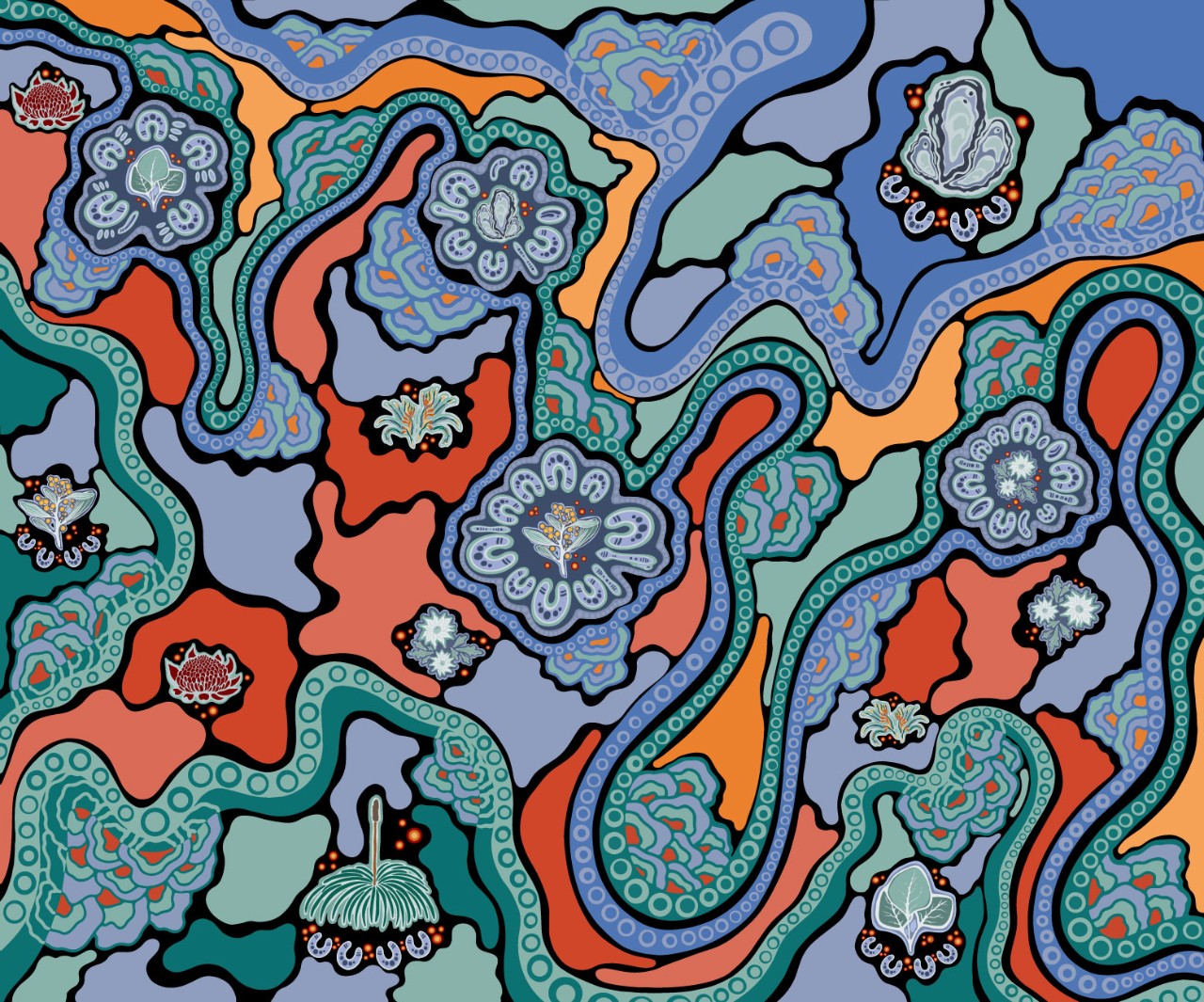

'Walking on Country' by Jessie Waratah, 2024
